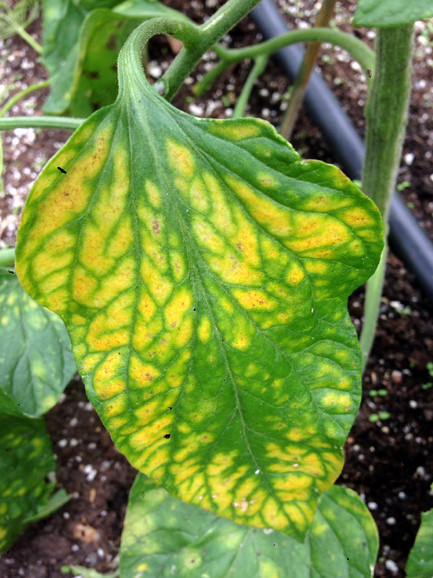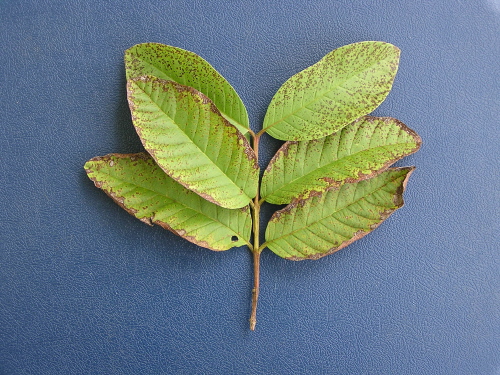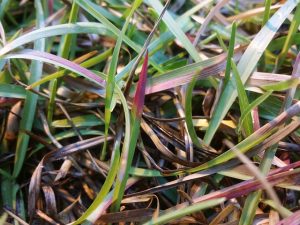Nutrition deficiency in plants

It may be a sign of nutrition deficiency if plants fail to thrive instead of proper care of plants. Plants need a lot more care than you think, if you witness the leaves turning yellow, red, or even dying, they are the first signs that they might be suffering from micro nutrient deficiency. In this article we discuss the most common nutrient deficiencies that might be affecting your crops and how you can stop them.
Introduction
Nutrient is considered to be deficient whenever the plants lack sufficient amount of essential nutrient required for its growth. Without adequate nutrients plants growth will be suppressed and may even die out. As like in Newton’s 3rd law of motion “In every action there is equal and opposite reaction”, plants with nutrient deficiency also express severe symptoms which is described below in detailed:

Different types of deficiency, its symptoms and remedial measures
1. Nitrogen deficiency
All plants require sufficient amounts of nitrogen for their proper growth. Nitrogen deficiency occurs in plants when organic content with a high carbon amount is added to the soil.
Symptoms
- Lower leaves turn yellow and may fall eventually.
- The growth of plants gradually stops.
- Stems of plants will start to change their color into purple or reddish.
Remedies
- Proper usage of fertilizers like ammonium phosphate, urea, etc with high N value.
- Temperature, light intensity, and other factors should be maintained properly.
- A proper dilute rate of fertilizers should be used.
2. Phosphorus deficiency
Phosphorus has very important roles i.e. converting the sun’s energy into useful plant compounds. Insufficient supply of phosphorus can lead plants to phosphorus deficiency.
Symptoms
- Stems and leaves of plants contain purple tint.
- Plants may lose leaves.
- phosphorus-deficient plants may mature or grow at a slower rate.
Remedies
- Temperature and amount of phosphorus should be maintained while gardening.
- Provide plants a bone meal as a supplement.
- Maintaining soil within a specified pH range.
3. Magnesium deficiency
Magnesium is one of the most important nutrients for photosynthesis, which is a crucial process of converting light energy into chemical energy. Newer leaves receive magnesium from older leaves for essential growth.

Deficiency Symptoms
- Lower or older leaves turn yellow and bright, this process starts from the tip of the leaves.
- Leaves get thinner and break apart easily (brittle).
- Discoloration of leaf veins, they turn reddish or purplish (also known interveinal reddening)
Remedies
- Use Epsom Salts (Magnesium Sulphate) or Dolomite (Magnesium Calcium Carbonate).
4. Calcium Deficiency
Calcium in plants helps in strengthening cell walls and also affects the quality of bearing fruits. It also protects plants from diseases and promotes the healthy growth of the plants.

Deficiency Symptoms
- The growth of the newer leaves halt.
- Newer leaves turn yellow due to not having enough chlorophyll to absorb sunlight.
- There are weird changes in the shape of the leaves.
Remedies
- Apply Calcium Nitrate.
- Maintain the pH of the soil above 6.0.
5. Sulfur deficiency
Sulfur is responsible for the formation of chlorophyll which converts carbon dioxide and water into oxygen and glucose using sunlight. It also lends a hand in the generation of proteins.

Deficiency Symptoms
- Newer leaves show early symptoms of sulfur deficiency, these leaves start to turn yellow due not having enough chlorophyll.
- The growth of the leaves halt.
Note: The symptoms of sulfur deficiency are much similar to Nitrogen deficiency.
Remedies
- Use sulfur-based fertilizers such as Sulphate of Potash or Ammonium Sulphate.
6. Potassium Deficiency
Potassium is another important nutrient for the plants, it is necessary for bearing fruits, flowers, and strengthening and stiffening the cell walls.

Deficiency symptoms
- Fruit discoloration.
- The quality of both the flower and the fruit massively drop down.
- New leaves turn yellow and older leaves tend to have interveinal reddening.
- Stalks get thinner, sensitive and break easily.
Remedies:
- Use fertilizers such as Sulphate of Potash.
- Don’t use water treated with water softeners.
- Maintain essential nutrients at the right time.
7. Zinc Deficiency
Zinc alongside with other micronutrients such as sulfur is necessary for the formation of the chlorophyll on the leaves, and also promotes healthy growth of leaves. It is one of the most common nutritional deficiencies in plants all over the world.

Deficiency Symptoms
- Leaves have interveinal chlorosis ( yellowing of leaves between the veins).
- The shape of the leaves twists or get distorted.
- The plants don’t grow to their potential height, the growth of the plants more or less halt.
Remedies
- Organic fertilizers such as bone meal which increases the pH and calcium content of the soil must be used so the plants can absorb enough zinc.
8. Iron and Manganese
Iron and manganese deficiency occur in plants that prefer acidic soil for growth. These plants are also known as Ericaceous plants. Iron is responsible for germination, disease resistance, while Manganese helps in photosynthesis, respiration.

Deficiency symptoms
- Interveinal chlorosis (the area between the leaves turn yellow ).
Remedies
- Use Iron Sulphate or Iron Chelate.
- Cover the soil around the plants with Manganese treatments such as Manganese Sulphate.
9. Oxygen Deficiency
Oxygen for plants is highly important because it makes the process of respiration and metabolism more efficient. The main reason for oxygen deficiency in plants is poor irrigation and watering methods.

Symptoms
- Roots of plants get changed into brown color and mushy.
- Leaves of plants start to fall eventually.
- The color of leaves changes its color from green to yellow.
Remedies
- Over-watering should be avoided.
- Hydroponic systems should be applied.
10. Carbon dioxide Deficiency
We know that plants take in carbon dioxide and convert it into energy for growth. It is one of the most common nutritional deficiencies in plants all over the world.

Symptoms
- The growth of plants gets stunted.
- After deficiency, plants absorb less water or nutrient solution than normal.
- Plants grow at a very slow pace.
Remedies
- The supply of carbon dioxide should be done properly.
- For indoor plants, proper ventilation should be made.
Photo Credit:
https://www.facebook.com/CropnutsAg/?tn-str=k*F
Frequently Asked Questions (FAQs)
1. What are plant nutrient deficiencies?
– Such conditions when different essential nutrients available to plants are below-normal or below required level which reduce their growth and development, and may even cause death is called as plant nutrient deficiencies.
2. What is the most common nutrient deficiency in plants?
– Phosphorous, Nitrogen and Iron.
3. How long does it take to correct nutrient deficiency in plants?
– 6 weeks to 3 months (Iron might take 3 months).
4. What is the good source of nitrogen for plants?
– Mixing compost manure in soil.
– Planting green manure crop such as borage.
– Planting nitrogen fixing crops like red lentils, beans and peas.
– Mulching the soil for maintaining soil moisture and reducing leaching.





excellent info on moringa plants, where can I purchase seeds to plant it?
The best place is amazon at your location. Try checking some agro stores around you. Let us know for more questions.
A very interesting article. I thought they were part of pilea peperomioids. These nasturtium grow like weeds where I live in southern part of South Africa. The only problems are snails. They are hardy and face drought conditions well. We don’t get frost. I love them xx
Thank you for your comment. I really appreciate it. Please be with us and help us share with your friends and family.
You are so right about choosing well drained soil for planting the grapes. It worked great when we tried.
Thank you for your comment. We appreciate it.